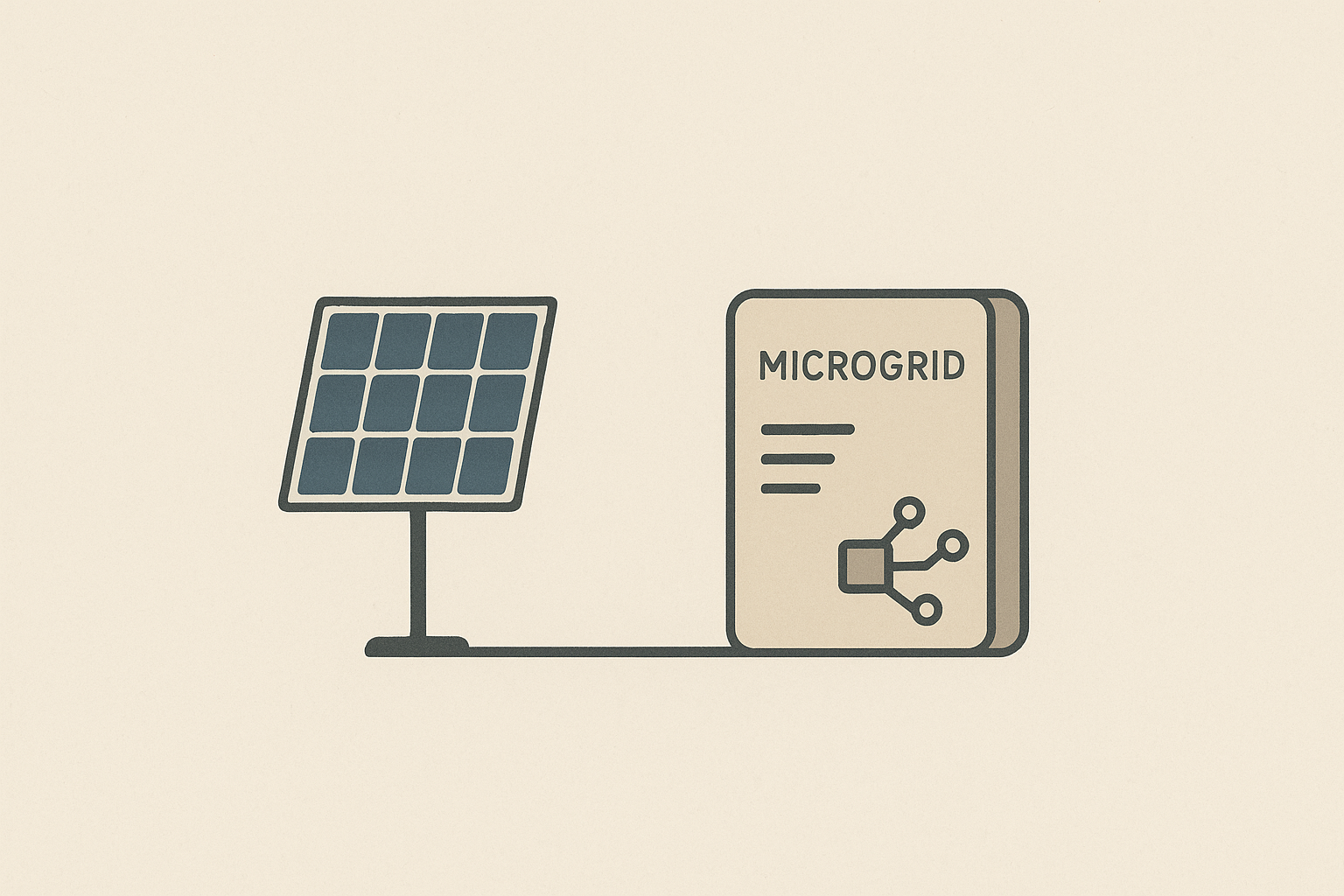The Green Software Playbook: Building Energy-Proportional Cloud and Edge Systems
A step-by-step playbook for engineers and founders to design energy-proportional software systems that reduce cost, carbon and risk.

The Evergreen Challenge
Software drives the modern world, yet most cloud and edge applications are designed for performance and availability, not energy efficiency. As digital infrastructure scales, energy consumption and embedded carbon become persistent, expensive risks for organisations. The challenge is practical and lasting: build systems that deliver required business outcomes while minimising energy use, operating cost and carbon, using reproducible engineering and product frameworks.
This guide defines two complementary, evergreen approaches. The first is an engineering framework to design, measure and operate energy-proportional systems. The second is a product and business strategy to monetise efficiency, align incentives across teams, and embed sustainability into product-market fit. Both approaches are durable, technology-neutral, and applicable from serverless functions to IoT edge nodes.
Why This Matters Long Term
Energy efficiency reduces variable costs and exposure to volatile energy prices, it shrinks operational carbon footprint, and it enables new market differentiation by offering lower-cost, lower-carbon services. The UK government and regulators have set long-term decarbonisation goals; software and infrastructure choices will be part of compliance and corporate reporting for years to come, so engineering patterns that reduce energy are strategic, not cosmetic. For context, the UK net zero commitment is documented in official policy guidance; see the net zero strategy for the United Kingdom for further detail (gov.uk, rel=nofollow).
Did You Know?
Web-scale applications with static provisioning typically waste 30 to 60 percent of allocated compute capacity, translating directly into higher energy use and cost. Energy-proportional design targets utilising resources in closer proportion to demand, not to peak load.
Two Evergreen Solutions
Below are two solutions that work together. Each contains step-by-step implementation guidance. Choose both for best effect: technical measures reduce energy use, while product and commercial design ensures those savings persist and scale.
Solution A: Engineering Framework for Energy-Proportional Systems
Goal, measure, optimise, operate: a practical loop for software teams to make systems energy proportional.
Core principles
- Measure first, optimise second; treat energy as a first-class metric alongside latency and throughput.
- Design for energy proportionality; system energy should track load and degrade gracefully.
- Use adaptive resource allocation, efficient algorithms and right-sized hardware for each workload.
- Expose energy and carbon metrics across teams, and incorporate them into SLOs and incident response.
Step-by-step implementation
1. Instrumentation and baseline
Before making changes, measure. Use a hierarchy of measures from facility-level power to per-process estimates.
- Facility-level or VM-level power: where available, ingest server PDU metrics or cloud provider energy metadata.
- Host-level estimates: use RAPL or platform powercap interfaces on Linux, or vendor SDKs, to read CPU package power.
- Application-level estimation: correlate CPU utilisation, number of active requests, and memory use against a simple power model to estimate per-process watts.
Practical baseline script, using a conservative model that estimates power from CPU utilisation. Publish metrics to Prometheus.
<!-- Python Prometheus exporter: energy_estimator.py -->from prometheus_client import start_http_server, Gauge
import psutil
import time
# Calibrated power constants per host family (watts at 100% CPU)
PEAK_POWER = 65.0 # adjust per machine
IDLE_POWER = 10.0 # adjust per machine
g_power = Gauge('host_estimated_power_watts', 'Estimated host power consumption in watts')
def estimate_power():
cpu = psutil.cpu_percent(interval=1)
# linear model: idle + (peak - idle) * cpu%
watts = IDLE_POWER + (PEAK_POWER - IDLE_POWER) * (cpu / 100.0)
return watts
if __name__ == '__main__':
start_http_server(8000)
while True:
p = estimate_power()
g_power.set(p)
time.sleep(5)
Notes, calibration and improvements:
- Calibrate PEAK_POWER and IDLE_POWER per instance family by brief experiments, or read host power sensors if available.
- For multi-tenant VMs, estimate per-container power by proportional CPU share, or prefer cgroup cpuacct metrics where supported.
- Validate models over time and during different load patterns.
2. Expose and centralise metrics
Ingest host and application energy metrics into a central monitoring stack, for example Prometheus for metrics and Grafana for dashboards. Create long-term retention for capacity planning.
3. Policies and autoscaling
Move from CPU-only autoscaling to energy-aware autoscaling. Two patterns are effective:
- Energy-targeted autoscaling: define a target power budget per service and scale replicas to stay under that budget while meeting latency SLOs.
- Performance-aware energy throttling: where latency budgets allow, reduce clock frequency, limit concurrency or move batch work to off-peak periods.
Example: Prometheus-based HPA driven by estimated power metric. The exact integration depends on your orchestration. For Kubernetes with the prometheus-adapter set up, an HPA YAML might reference a custom metric representing per-pod power.
<!-- Kubernetes HPA snippet: energy-aware horizontal pod autoscaler -->
apiVersion: autoscaling/v2beta2
kind: HorizontalPodAutoscaler
metadata:
name: energy-aware-hpa
spec:
scaleTargetRef:
apiVersion: apps/v1
kind: Deployment
name: my-service
minReplicas: 2
maxReplicas: 20
metrics:
- type: Pods
pods:
metric:
name: pod_estimated_power_watts
target:
type: AverageValue
averageValue: "5" # target average watts per pod
Implementation notes:
- Set conservative targets and test. Sudden downsizing can increase latency if not well tuned.
- Combine with latency SLOs using priority for traffic routing, so critical paths are preserved.
4. Runtime optimisation techniques
- Right-size concurrency and request multiplexing to reduce CPU stalls.
- Prefer energy-efficient algorithms and data structures; energy often follows CPU cycles and memory bandwidth.
- Move suitable workloads to specialised low-power hardware or edge nodes when latency and throughput requirements permit.
- Use scheduling windows for batch jobs to shift work to periods of lower grid carbon intensity if your organisation tracks grid data.
5. Verification and continuous improvement
- Track both absolute energy and energy per business unit metric, for example watts per successful transaction.
- Run controlled A/B tests to quantify energy vs performance trade-offs.
- Integrate energy regression tests into your CI pipeline; detect changes that raise energy per transaction by threshold percentages.
Solution B: Product and Commercial Strategy for Sustainable Software
Engineering changes require organisational alignment to stick. This strategy explains how to capture value and create incentives across teams.
Core components
- Green SLOs and KPIs, defined and owned by product teams.
- Price and product differentiation based on efficiency and transparency.
- Internal chargeback or FinOps rules that reflect energy costs and carbon impacts.
Step-by-step implementation
1. Define Green SLOs
Green SLOs complement latency and availability SLOs. Example SLOs include:
- Average energy per transaction not to exceed X watts for baseline traffic.
- Percent of traffic served under a defined energy budget during business hours.
2. Billing and pricing
SaaS providers can create new monetisation levers:
- Efficiency tiers, where customers pay for premium low-latency instances and lower-cost, energy-efficient tiers for background or batch workloads.
- Transparency premium, where customers receive per-tenant energy and carbon reports for compliance.
- Embedded energy credits, where the vendor offsets residual emissions and provides a verifiable chain of custody.
Example financial blueprint, simplified:
- Baseline hosting cost: 1000 compute-hours per month at £0.05/hour = £50. Energy optimisation reduces compute-hours to 700, saving £15 per month. If the company offers an efficiency tier charging a £5 premium for detailed carbon reporting, net revenue increases while customer cost decreases for efficient workloads.
3. Contracts and SLAs
Offer service-level options that allow customers to accept slightly higher latency in exchange for lower cost and lower carbon. For commodity workloads, a deferred processing SLA can save energy and cost at scale.
4. Marketing and compliance
Provide customers with verifiable energy and carbon reports. Integrate with standard reporting frameworks to support corporate sustainability reporting.
5. Organisation and governance
Form multidisciplinary teams combining engineering, product, and finance to shepherd efficiency initiatives. Create a green steering committee to prioritise investments with the highest cost and carbon returns.
Technical Deep Dive: Energy-Aware Autoscaling Example
The following is a compact, practical walk-through to implement energy-aware autoscaling for a Kubernetes service. It ties together the Python exporter above, the Prometheus stack, and a Kubernetes HPA. The aim is to maintain latency SLOs while controlling energy.
Architecture overview
- Each node runs an energy estimator exporter publishing host_estimated_power_watts.
- Each pod exports pod_estimated_power_watts, calculated from container CPU share.
- Prometheus scrapes both and stores rates.
- prometheus-adapter exposes custom metrics to Kubernetes HPA.
- HPA scales by target average pod_estimated_power_watts and keeps a floor for latency.
Pod exporter sketch
<!-- Python container-level estimator: pod_energy_exporter.py -->
from prometheus_client import start_http_server, Gauge
import psutil, time, os
# if running inside container with cgroup v1, read cpuacct.stat otherwise approximate
CPU_CORES = psutil.cpu_count()
PEAK_POWER_PER_CORE = 5.0 # watts per core at 100% util, adjust via calibration
IDLE_POWER_PER_CORE = 0.8
g_pod_power = Gauge('pod_estimated_power_watts', 'Estimated pod power consumption in watts')
def estimate_pod_power():
# use process CPU percent for container, proportional to cores
cpu = psutil.cpu_percent(interval=1)
watts = (IDLE_POWER_PER_CORE + (PEAK_POWER_PER_CORE - IDLE_POWER_PER_CORE) * (cpu / 100.0)) * CPU_CORES
return watts
if __name__ == '__main__':
start_http_server(9100)
while True:
g_pod_power.set(estimate_pod_power())
time.sleep(5)
Deploy this sidecar or include in application image to export per-pod power. Configure Prometheus service discovery to scrape /metrics from pods.
Prometheus query examples
- Average pod power: avg(rate(pod_estimated_power_watts[1m]))
- Energy per request: (sum(rate(pod_estimated_power_watts[5m])) by (service)) / (sum(rate(http_requests_total[5m])) by (service))
Practical tuning
- Start with permissive HPA limits, observe behaviour over several days, then tighten.
- Combine with PodDisruptionBudgets to avoid oscillation that causes throttling penalties.
- Prefer gradual scaling policies with cooldown windows to respect latency SLOs.
Pro Tip: Use conservative, empirically calibrated power models at first, then refine with hardware sensor data where available. Always validate that autoscaling decisions do not increase tail latency above SLOs.
Business Example: Productising Efficiency
Here is a recurring-revenue product blueprint for startups or platform teams that want to monetise green software capabilities.
Value propositions
- Cost savings: customers reduce runtime costs by moving to energy-proportional deployment patterns.
- Compliance and reporting: provide auditable energy and carbon reports for corporate sustainability needs.
- Choice and control: offer energy-aware deployment modes per workload.
Pricing model ideas
- Tiered subscription: Basic monitoring, Pro with autoscaling and reports, Enterprise with SLA-backed energy budgets and integration.
- Usage-based fee: a small fee per kWh measured or estimated, bundled with offsetting services.
- Marketplaces and integrations: partner with cloud providers to offer energy-aware instance pools as a managed add-on.
Financial blueprint
Model the unit economics using these inputs: baseline compute cost, expected percent saving from optimisation, revenue uplift from premium tiers, and cost of providing reporting and offsets. Use sensitivity analysis to show payback period for customers who switch to energy-aware tiers.
Q&A: Can you guarantee carbon reductions for customers if the model is estimate-based? Answer, you cannot fully guarantee avoided emissions without hardware-level measurements, but you can provide verifiable methodology, calibration data, and independent audits to increase confidence.
Operational and Risk Considerations
Energy optimisation changes risk profiles. Consider these long-term caveats and mitigations.
Warning: Aggressive rightsizing and autoscaling can increase application latency or error rates when not properly tuned. Always implement progressive rollout with observability and rollback paths.
- Observability: ensure energy metrics are in the same system as latency and error metrics to make trade-offs visible.
- Regression testing: include energy regression checks in CI to catch inadvertent increases.
- Governance: include energy and performance trade-offs in incident postmortems and planning.
Cross-Reference: Hardware and IoT
Energy optimisation is most effective when aligned with hardware design. For teams building hardware-connected systems, coordinate with hardware teams on repairability and upgrade paths to extend device life and reduce embodied carbon. For readers moving from device optimisation to software stacks, see the practical hardware design guidance in Circular IoT Design: A Practical Framework for Repairable, Upgradeable and Energy-Efficient Devices, which complements the software-side playbook here.
Metrics, KPIs and Reporting
Choose metrics that matter to customers and stakeholders. Examples:
- Energy per transaction (watts or joules per successful request).
- Operational energy intensity (kWh per day for the service).
- Energy savings vs baseline and cost savings realised.
- Carbon accounting: estimated CO2e per unit using recognised emission factors.
Use standard emission factors when converting kWh to CO2e, and document the methodology. Transparency builds trust, and accurate reporting enables comparability across vendors.
Implementation Roadmap
Six-month pragmatic roadmap for engineering and product teams.
- Month 0 to 1, discovery: instrument host and app-level metrics, create baseline dashboards.
- Month 1 to 2, prototyping: deploy exporters, set up Prometheus, create initial HPA with conservative targets.
- Month 2 to 3, pilot: run energy-aware autoscaling on non-critical workloads and collect data.
- Month 3 to 4, productise: define Green SLOs, prepare customer-facing reports, create pricing options.
- Month 4 to 6, roll-out: expand autoscaling policies to critical services under careful monitoring, implement CI energy tests, and launch product tiers.
Case Studies and Hypothetical Outcomes
Organisations that adopt energy-proportional design typically see a combination of direct cost reduction, lower peak infrastructure needs, and improved sustainability metrics. For example, an online batch processing pipeline that shifts 40 percent of tasks to off-peak windows while improving algorithmic efficiency might reduce energy consumption by 25 percent and operating cost by 18 percent, with modest engineering effort.
Evening Actionables
- Instrument one non-critical service with the provided Python exporter and add metrics to your central monitoring stack.
- Run a 14-day baseline to measure current energy per transaction and variance at different loads.
- Create a simple energy-aware HPA with conservative targets, and run a canary for one deployment.
- Add an energy regression check to CI that fails builds when energy per transaction rises more than a preset threshold.
- Draft a Green SLO for one product team and align finance to model potential cost savings and pricing opportunities.
This playbook is intentionally implementation-oriented and vendor neutral. Over time, the specifics will change, but the principles remain: measure reliably, design for proportionality, align incentives across engineering and product, and monetise efficiency where it creates value. These steps will keep your systems robust, competitive and sustainable for years to come.





Comments ()